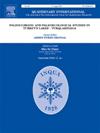先秦时期漓江流域聚落发展:环境因素与预测模型
IF 1.8
3区 地球科学
Q3 GEOGRAPHY, PHYSICAL
引用次数: 0
摘要
本研究运用行为生态学理论,特别是理想自由分布模型,探讨了粤东北漓江流域先秦族群对聚落区位的战略选择。利用地理信息系统(GIS)对134个考古遗址进行分析,旨在确定聚落模式是否反映了环境约束框架下的个体优化决策。假设是,社区最初定居在排名最高的栖息地,随后随着人口密度的增加而迁移到排名较低的地区。这项研究包括数字地形分析、水文分析和对这134个考古遗址的环境背景的检查。研究结果表明,定居点战略性地聚集在海拔100至300米之间,避免了易受洪水影响的低地,同时保持了水资源的可及性,偏好2-6°的平缓斜坡,适合农业,面向东南的朝向优化了阳光照射和防风。水文分析表明,定居点位于距离三级和四级河流200-500米的地方,表明了复杂的水管理策略。环境分析表明,从分散到集中的聚落模式跨越了四个时间阶段,反映了从狩猎采集社会到农业社会的转变。使用二元逻辑回归,开发了一个预测模型,在确定潜在站点位置方面达到50%以上的准确性。研究表明,在不断优化环境优势的同时,个体的定居决策如何从早期更广泛的栖息地利用演变为后期对主要农业地点的集中占领。这种模式支持理想自由分布模型的预测,并说明农民如何重新定义栖息地适宜性排名,而不是消除环境约束。本文章由计算机程序翻译,如有差异,请以英文原文为准。
Pre-Qin Period Settlement Development in the Li River Basin in China: Environmental Factors and Predictive Modeling
This study utilizes behavioral ecology theory, particularly the Ideal Free Distribution model, to investigate how pre-Qin communities strategically chose their settlement locations in the Li River Basin of northeastern Guangdong Province. By employing Geographic Information Systems (GIS) to analyze 134 archaeological sites, we aim to determine whether settlement patterns reflect individual optimization decisions within the framework of environmental constraints. The hypothesis is that communities initially settled in the highest-ranked habitats and subsequently moved to lower-ranked areas as population density increased. The research involves digital terrain analysis, hydrological analysis, and examination of the environmental context of these 134 archaeological sites. The findings reveal that settlements are strategically clustered between 100 and 300 m elevation, avoiding flood-prone lowlands while maintaining access to water resources, with preferences for gentle 2–6° slopes suitable for agriculture and southeast-facing aspects that optimized solar exposure and wind protection. Hydrological analysis indicates settlements favored locations 200–500 m from third and fourth-order streams, demonstrating sophisticated water management strategies. Environmental analysis shows a transition from dispersed to concentrated settlement patterns across four chronological phases, reflecting a shift from hunting-gathering to agricultural societies. Using binary logistic regression, a predictive model was developed, achieving over 50 % accuracy in identifying potential site locations. The study demonstrates how individual settlement decisions, while consistently optimizing environmental advantages, evolved from broader habitat utilization in early phases to concentrated occupation of prime agricultural locations in later periods. This pattern supports the predictions of the Ideal Free Distribution model and illustrates how farmers redefined habitat suitability rankings instead of eliminating environmental constraints.
求助全文
通过发布文献求助,成功后即可免费获取论文全文。
去求助
来源期刊

Quaternary International
地学-地球科学综合
CiteScore
5.60
自引率
4.50%
发文量
336
审稿时长
3 months
期刊介绍:
Quaternary International is the official journal of the International Union for Quaternary Research. The objectives are to publish a high quality scientific journal under the auspices of the premier Quaternary association that reflects the interdisciplinary nature of INQUA and records recent advances in Quaternary science that appeal to a wide audience.
This series will encompass all the full spectrum of the physical and natural sciences that are commonly employed in solving Quaternary problems. The policy is to publish peer refereed collected research papers from symposia, workshops and meetings sponsored by INQUA. In addition, other organizations may request publication of their collected works pertaining to the Quaternary.
 求助内容:
求助内容: 应助结果提醒方式:
应助结果提醒方式:


